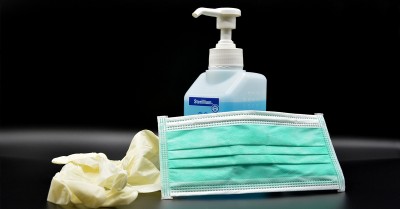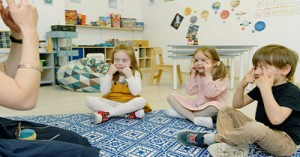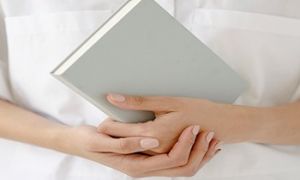It's important that all Educators currently working in services to take care of their health and safety as well as others including children, parents and visitors. Services must do all that they can to minimise the risk of exposure of COVID-19 as reasonably practicable.
As per Safe Work Australia, they recommend the following strategies:
Physical distancing
One of the most effective ways to minimise the spread of the COVID-19 virus is to limit physical proximity between people to at least 1.5 metres apart. Put in place practical measures to encourage physical distancing:
- Calculate the area of each room, and the number of staff and children in attendance each day, and directing workers to space at least 1.5 metres apart to continue performing their duties, acknowledging that staff will have to come into contact with children
- Encourage workers and visitors to physically distance themselves through increased signage and information
- Encourage the use of outdoor space as much as possible
- Stagger staff breaks and encouraging workers to physically distance themselves in break rooms and when using shared spaces
- Limit the number of visitors to the centre (e.g. cancel incursions and non-essential training), and
- Discourage the use of public transport by staff if possible, or if not feasible, recommending that workers:
- travel at off-peak times
- wash hands with soap and water for at least 20 seconds, or sanitise hands with alcohol-based hand sanitiser, before and after travelling on public transport, and
- maintain physical distancing measures during any trip.
Hygiene
Environmental cleaning
The amount of time the COVID-19 virus survives on inanimate objects and surfaces will vary. Environmental cleaning is one way to remove the virus that causes COVID-19. Services should ensure:
- That frequently touched surfaces and objects such as doors, windows, tables, benchtops, nappy change areas and toys are cleaned and disinfected frequently using appropriate detergent and disinfectant solutions, and
- That people cleaning the workplace wear gloves and use alcohol-based hand sanitiser before and after wearing gloves.
- See the Department of Health information sheet on environmental cleaning and disinfection-principles for COVID-19 for further information.
Worker Hygiene
Educators should be required to practice good hygiene, including:
- Frequent hand washing
- Limiting contact with others, where possible, and
- Covering their mouths while coughing or sneezing.
- Washroom facilities for workers should have adequate facilities for good hygiene such as an adequate supply of soap, water and toilet paper. These must be kept clean, properly stocked and in good working order. Supplies of alcohol-based hand sanitiser should be provided around the centre, where possible.
- Staff should also be informed about the risk of exposure and good hygiene through increased signage and information. The Australian Government Department of Health has a range of posters and other resources aimed at educating the public about COVID-19. These posters can be placed in client-facing work environments.
General advice for workers, families and others
- Avoid touching your mouth, eyes, and nose with unwashed (or gloved) hands.
- Clean your hands thoroughly for at least 20 seconds using soap and water, or alcohol-based hand rub.
- Cover your nose and mouth when coughing and sneezing with a tissue or a flexed elbow. Put tissues in the bin.
- Avoid close contact with anyone with cold or flu-like symptoms.
- Physical distancing - maintain a 1.5-metre distance to others (two arm's length).
- Stay home if you are sick.
- Seek medical advice if you have a fever, cough, sore throat or shortness of breath (call your doctor or health direct on 1800 022 222).
Consultation and communicating with workers
- You must consult with your workers on health and safety matters relating to COVID-19. Allow workers to express views before you make any decisions.
- Workers are most likely to know about the risks of their work. Involving them will help build commitment to this process and any changes.
- Provide workers with a point of contact to discuss their concerns, and access to support services, including employee assistance programs.
- Remind workers they have a duty to take reasonable care for their own health and safety and to not adversely affect the health and safety of others.
- The model Code of Practice: Work health and safety consultation, cooperation and coordination can provide more information about your duties to consult.
- You need to communicate clearly with workers about control measures. Provide clear direction and guidance about what is expected of workers.
- Workers should know:
- when to stay away from the workplace
- what action to take if they become unwell
- what symptoms to be concerned about.
What else can I do?
- Keep your knowledge of the COVID-19 situation up-to-date. Follow the advice from authoritative sources such as the Australian Government Department of Health and check daily for any updates to safety advice.
- Understand your business and its WHS hazards and risks. It may not be possible because of the work you do to facilitate all workers to work from home, but there are many steps you can take to minimise the risks in early childhood education and care service.
- Make sure your service is properly resourced to manage WHS risks during the COVID-19 outbreak, and check that the resources are being used.
- Review your policies, procedures and reporting process to ensure they remain current for any incidents, hazards and other WHS issues that arise during this time. Update these materials if necessary.
- Ensure all that these are communicated clearly and processes are being followed.
- Consult with workers and ensure there is a means for them to raise any concerns about the steps you are taking to manage the risks.
For more information:
Stopping The Spread, Act Now
Social Distancing
Reference:
Early childhood education and care workers: Minimising the risk of exposure to COVID-19, Safe Work Australia, 3 April 2020







 As an Educator in Australia, your pay rate falls under the Children’s Services Award 2010. This award states the minimum amount that an employer can
As an Educator in Australia, your pay rate falls under the Children’s Services Award 2010. This award states the minimum amount that an employer can When working as a qualified Early Childhood Teacher (with a university degree) within a service, your rate of pay will come from the Educational Services
When working as a qualified Early Childhood Teacher (with a university degree) within a service, your rate of pay will come from the Educational Services When working as a Diploma Qualified Educator your pay rate is from the Children's Services Award 2010. This Award states your minimum rate of pay
When working as a Diploma Qualified Educator your pay rate is from the Children's Services Award 2010. This Award states your minimum rate of pay When working as a Cert 3 Qualified Educator, your pay rate is from the Children's Services Award 2010. This Award states your minimum rate of
When working as a Cert 3 Qualified Educator, your pay rate is from the Children's Services Award 2010. This Award states your minimum rate of Educational Leaders play a crucial role in their early childhood service by ensuring that the educational program aligns with best practices and supports the holistic
Educational Leaders play a crucial role in their early childhood service by ensuring that the educational program aligns with best practices and supports the holistic In early childhood education and care, ratios are more than a technicality—they are a frontline safeguard. Every child deserves responsive supervision, emotional connection, and developmental
In early childhood education and care, ratios are more than a technicality—they are a frontline safeguard. Every child deserves responsive supervision, emotional connection, and developmental With the new national child safety reforms kicking in on 1 September 2025, early childhood services like yours have a real opportunity to lead the
With the new national child safety reforms kicking in on 1 September 2025, early childhood services like yours have a real opportunity to lead the Here’s a comprehensive Mobile Phone and Smart Watch Policy tailored for early childhood education and care (ECEC) services in Australia, aligned with the latest 2025
Here’s a comprehensive Mobile Phone and Smart Watch Policy tailored for early childhood education and care (ECEC) services in Australia, aligned with the latest 2025 The Sea of Fish Challenge is a national initiative that invites children, educators, families, and communities to create and display fish artworks as a symbol
The Sea of Fish Challenge is a national initiative that invites children, educators, families, and communities to create and display fish artworks as a symbol Across the early childhood education and care sector, educators are sounding the alarm: current staffing ratios are insufficient to deliver safe, meaningful, and developmentally appropriate
Across the early childhood education and care sector, educators are sounding the alarm: current staffing ratios are insufficient to deliver safe, meaningful, and developmentally appropriate


